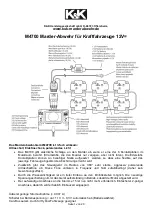
When the low tire pressure indicator
is on, one or more of your tires is
significantly underinflated. You
should stop and check your tires as
soon as possible, and inflate them to
the proper pressure as indicated on
the vehicle’s tire information placard.
If you think you can safely drive a
short distance to a service station,
proceed slowly, and inflate the tire to
the recommended pressure shown
on the driver’s doorjamb.
If the tire is flat, or if the tire
pressure is too low to continue
driving, replace the tire with the
compact spare tire (see page
).
If you cannot make the low tire
pressure indicator go out after
inflating the tires to the specified
values, have your dealer check the
system as soon as possible.
Driving on a significantly under
inflated tire causes the tire to
overheat and can lead to tire failure.
Underinflation also reduces fuel
efficiency and tire tread life, and may
affect the vehicle’s handling and
stopping ability.
Because tire pressure varies by
temperature and other conditions,
the low tire pressure indicator may
come on unexpectedly.
Each tire has its own pressure
sensor (not including the spare tire).
If the air pressure of a tire becomes
significantly low while driving, the
sensor in that tire immediately sends
a signal that causes the low tire
pressure indicator to come on.
Your vehicle is equipped with a tire
pressure monitoring system (TPMS)
that turns on every time you start the
engine and monitors the pressure in
your tires while driving.
326
U.S. models only
Low Tire Pressure
Indicator
Tire Pressure Monitoring System (TPMS)
270
09/07/02 17:13:48 31SNA640_275
Содержание 2010 Civic GX
Страница 57: ...54 09 07 02 16 35 09 31SNA640_059 I n f o r ma t i o nP r o v i d e db y...
Страница 239: ...236 09 07 02 17 07 47 31SNA640_241 I n f o r ma t i o nP r o v i d e db y...
Страница 353: ...350 09 07 02 17 27 34 31SNA640_355 I n f o r ma t i o nP r o v i d e db y...
Страница 371: ...368 09 07 02 17 30 38 31SNA640_373 I n f o r ma t i o nP r o v i d e db y...
















































